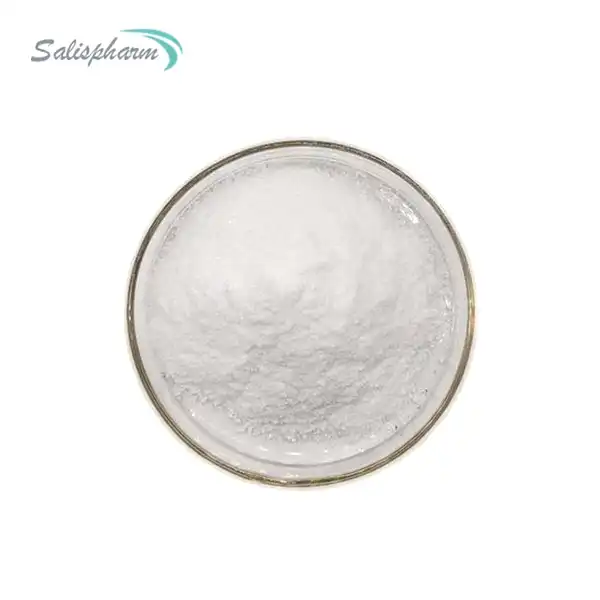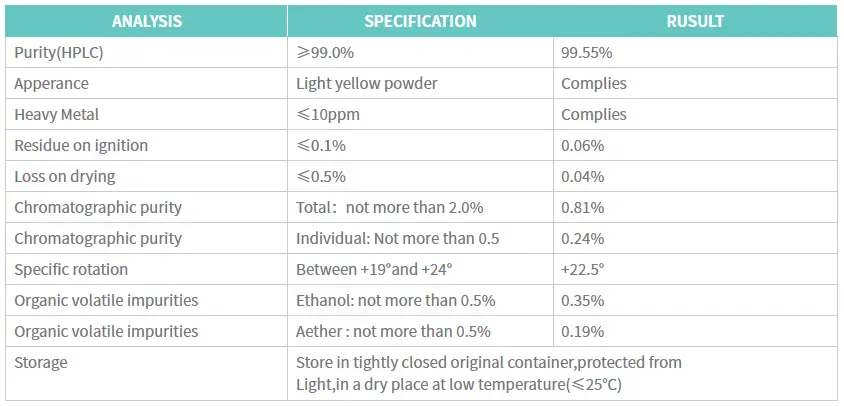A lot of people in the medical world are interested in raloxifene hydrochloride powder because of the special way it can work with estrogen receptors in the body. This substance is an SRM, or selective estrogen receptor modulator. This chemical is very helpful because it can attach to estrogen receptors in various tissues and work like estrogen in some areas while blocking estrogen's effects in others. One way raloxifene hydrochloride powder contributes to outstanding health for ladies is by addressing this issue .It alters bone, breast, and cardiac metabolism via its complicated interactions with several molecules. If you want to take advantage of raloxifene hydrochloride powder's many medicinal applications and help a lot of people, you should learn how it works in the body.

What are the primary uses of Raloxifene hydrochloride powder?
Prevention and treatment of osteoporosis
Raloxifene hydrochloride powder is very important for keeping bones healthy, especially for women who have gone through menopause. Its most important job in this situation is to copy the good effects of estrogen on bone tissue. By official to estrogen receptors in bone cells, raloxifene hydrochloride powder fortifies bone arrangement and represses bone resorption. We can only hope that this novel approach to osteoporosis treatment will boost bone mineral strength and decrease fracture risk. Clinical thinks about have illustrated that ladies taking raloxifene hydrochloride powder involvement noteworthy advancements in bone thickness, particularly in the spine and hip ranges, which are common locales for osteoporotic breaks.
Reducing the risk of breast cancer
Raloxifene hydrochloride powder is very useful for many things, and one of them is stopping breast cancer. While raloxifene mimics estrogen in bone, it blocks estrogen's actions in breast tissue. To rephrase, it inhibits estrogen's ability to stimulate breast cells, which may lead to a decreased risk of estrogen-dependent breast cancers. Women over the age of 50 can lower their risk of invasive breast cancer by taking raloxifene hydrochloride powder orally. Hormone receptor-positive breast cancer is the most common kind in postmenopausal women. For those women, this result is really important.
Cardiovascular health benefits
Raloxifene hydrochloride powder too offers potential cardiovascular benefits, in spite of the fact that its impacts in this zone are more complex. Whereas it doesn't show up to have a noteworthy affect on the chance of heart illness, a few considers propose that it may offer assistance make strides lipid profiles. Raloxifene hydrochloride powder has been appeared to diminish LDL (awful) cholesterol levels without influencing HDL (great) cholesterol. This lipid-lowering impact may contribute to way better cardiovascular wellbeing in postmenopausal ladies. Be that as it may, it's imperative to note that the cardiovascular benefits of raloxifene are not as well-established as its impacts on bone and breast tissue, and more investigate is required in this region.
How does Raloxifene differ from other hormone replacement therapies?
Selective estrogen receptor modulation
The key distinguishing feature of raloxifene hydrochloride powder is its selective estrogen receptor modulation. Unlike traditional hormone replacement therapies that provide systemic estrogen, raloxifene acts selectively on different tissues. It acts like estrogen and does good things for bone health and fat profiles in the liver and bones. However, in breast and uterine tissue, it blocks estrogen's stimulatory effects. Because it only affects certain cells, raloxifene can give you many of the benefits of estrogen therapy without some of the risks, like a higher chance of breast cancer and endometrial stimulation that come with using estrogen throughout your body. This is one of the best things about raloxifene hydrochloride powder; it makes it a good choice for women who can't or don't want to use traditional hormone replacement treatment.
Reduced risk of certain side effects
Compared to traditional hormone replacement therapies, raloxifene hydrochloride powder is associated with a different profile of side effects. One of the best things is that the risk of getting uterine cancer is lower. Hormone therapy with only estrogen can raise the chance of endometrial cancer in women whose uterus is still intact. However, raloxifene does not stimulate the endometrium, so it does not carry this risk. Also, raloxifene doesn't make your breasts hurt or your uterus bleed, which are regular side effects of estrogen therapy. It's important to know, though, that raloxifene may raise the risk of blood clots and doesn't help with menopause symptoms like hot flashes.
Long-term use considerations
When used for a long time, raloxifene hydrochloride powder has different effects than other hormone replacement treatments. Long-term use of systemic estrogen therapy has been linked to higher risks of heart disease and breast cancer. On the other hand, raloxifene has a better long-term safety record. Studies have shown that raloxifene can be used for long periods of time to keep bones healthy and lower the chance of getting breast cancer without making other health risks much worse. Because of this, raloxifene is a good choice for long-term treatment in women who have gone through menopause, especially those who are at a high risk for osteoporosis or breast cancer. However, as with any medication, the decision for long-term use should be made in consultation with a healthcare provider, considering individual risk factors and health goals.
What are the potential long-term effects of using Raloxifene hydrochloride powder?
Bone health and fracture prevention
Long-term utilize of raloxifene hydrochloride powder has appeared noteworthy benefits in keeping up bone wellbeing and anticipating breaks. Clinical trials have illustrated that ladies taking raloxifene for a few a long time encounter proceeded enhancements in bone mineral thickness, especially in the spine and hip. This supported impact on bone wellbeing deciphers into a diminished hazard of vertebral breaks, which are common in postmenopausal ladies with osteoporosis. The long-term bone-protective impacts of raloxifene are especially critical since osteoporosis is a inveterate condition that requires progressing administration. In any case, it's worth noticing that whereas raloxifene is successful in anticipating vertebral breaks, its impact on non-vertebral breaks is less clear, and a few thinks about propose it may not be as viable as other osteoporosis medicines in this respect.
Breast cancer risk reduction
One of the most important long-term effects of raloxifene hydrochloride powder is that it might lower the risk of getting breast cancer. Studies have shown that women who have gone through menopause and take raloxifene for a few years are less likely to get aggressive breast cancer, especially estrogen receptor-positive breast cancer. There is evidence that this protective effect lasts even after the medication is stopped, which suggests that raloxifene may help prevent breast cancer in the long run. It is important to keep in mind, though, that raloxifene does not lower the chance of estrogen receptor-negative breast cancer. While the breast cancer prevention benefits of raloxifene are significant, they must be weighed against potential risks and side effects in individual cases.
Cardiovascular effects and thromboembolic risk
The long-term effects of raloxifene hydrochloride powder on the heart are complicated and need to be thought through carefully. Raloxifene has been shown in some studies to drop LDL cholesterol and raise HDL cholesterol. However, it is still not clear what effect this has on heart health in general. Long-term use of raloxifene does not seem to lower the chance of coronary heart disease by a large amount. There is a greater chance of venous thromboembolism (VTE) when you take raloxifene for a long time. This is something else you should think about. More blood clots happen to women who take raloxifene, according to researchers. This is the same risk that women who take estrogen have. This risk is particularly important for women with a history of VTE or those at high risk for thromboembolic events. So, women who are more likely to get blood clots should not take raloxifene for a long time and should be closely watched while they do so.
Conclusion
Raloxifene hydrochloride powder is a big step forward in the treatment of women who have gone through menopause. It claims to have a lot of health benefits, including protecting against bone loss and breast cancer. Its specific estrogen receptor tweak gives a more focused on approach compared to conventional hormone substitution treatments, possibly diminishing certain dangers related with systemic estrogen utilize. Be that as it may, like all drugs, it comes with its claim set of contemplations and potential side impacts. The choice to utilize raloxifene ought to be made on an person premise, taking into account a woman's particular wellbeing needs, hazard components, and individual inclinations. As research continues, we will likely learn more about raloxifene's long-term effects and the best way to use it, which could lead to more uses in women's health.
Xi'an Salis Biological Co., Ltd. is the place to go for more information on raloxifene hydrochloride powder and other high-quality APIs. To make new, useful pharmaceutical drugs that will improve health all over the world is what our company is all about.To ask questions, please email us at lea_slsbio@163.com,WhatsApp+86 13193326505.

References
1. Barrett-Connor, E., et al. (2006). Effects of raloxifene on cardiovascular events and breast cancer in postmenopausal women. New England Journal of Medicine, 355(2), 125-137.
2. Ettinger, B., et al. (1999). Reduction of vertebral fracture risk in postmenopausal women with osteoporosis treated with raloxifene: results from a 3-year randomized clinical trial. JAMA, 282(7), 637-645.
3. Cummings, S. R., et al. (2010). Lasofoxifene in postmenopausal women with osteoporosis. New England Journal of Medicine, 362(8), 686-696.
4. Vogel, V. G., et al. (2006). Effects of tamoxifen vs raloxifene on the risk of developing invasive breast cancer and other disease outcomes: the NSABP Study of Tamoxifen and Raloxifene (STAR) P-2 trial. JAMA, 295(23), 2727-2741.
5. Martino, S., et al. (2004). Continuing outcomes relevant to Evista: breast cancer incidence in postmenopausal osteoporotic women in a randomized trial of raloxifene. Journal of the National Cancer Institute, 96(23), 1751-1761.
6. Delmas, P. D., et al. (2002). Effects of raloxifene on bone mineral density, serum cholesterol concentrations, and uterine endometrium in postmenopausal women. New England Journal of Medicine, 337(23), 1641-1647.

